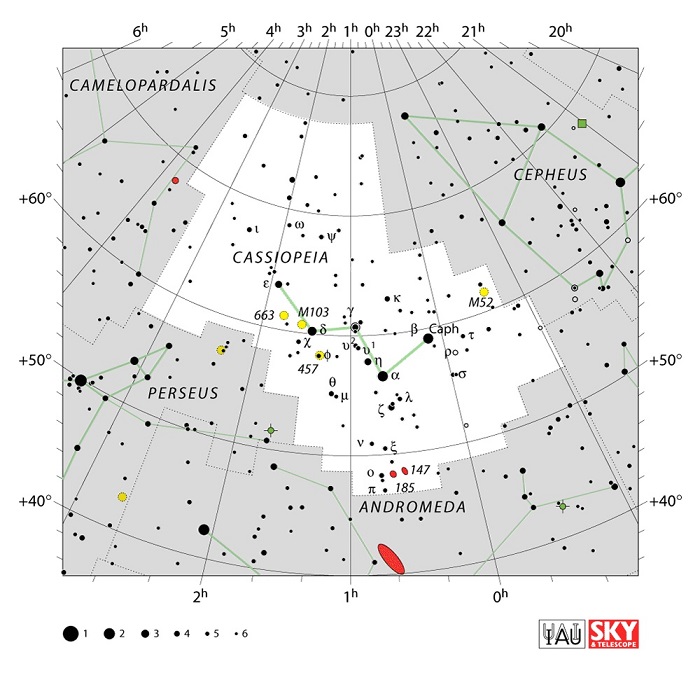
Randomly, I've chosen Cassiopeia in the northern hemisphere as a place to delve into some broader astronomical topics. On the surface we see tens of stars that form an outline of some object or mythological entity. But, in entirety, there are astronomical components that not only cover stellar theory and types, galactic structure, nebulae, clusters, and exoplanets, but also history (5) (to name a few). ^33098f

I could point out a number of objects but perhaps one of the more famous objects within Cassiopeia is the supernova remnant Cassiopeia A - or sometimes abbreviated Cas A. In the chart above Cas A is located to the far right of the constellation bounds to the right of Caph and under M52. It is located about 2 degrees from the Galactic plane.
Historically, a supernova within our galaxy would have some probability of becoming a temporary visible bright star in the sky yet there is no record of Cas A appearing when it exploded in 1680 (an interesting historical thread to investigate (6) ). ^1df076
After Cas A exploded the outer shell of the progenitor star was ejected by the shock wave at about 10,000 km/s carrying both a large portion of the stellar mass outward but also sweeping up interstellar mass along the way. This is known as the free expansion phase where the mass in the expanding ring is much greater than any swept up mass in front of the wave.
345 years * 3.154e+7 sec/year * 10000 km/sec = 1.088e+14 kilometers or about 11.5 light years! (or 1 ly every 30 years)
The nebula itself is composed of ionized gases, primarily hydrogen but also has dominate oxygen, silicon, calcium, sulphur, and iron emissions - produced by the progenitor star's evolution.
Back to main content